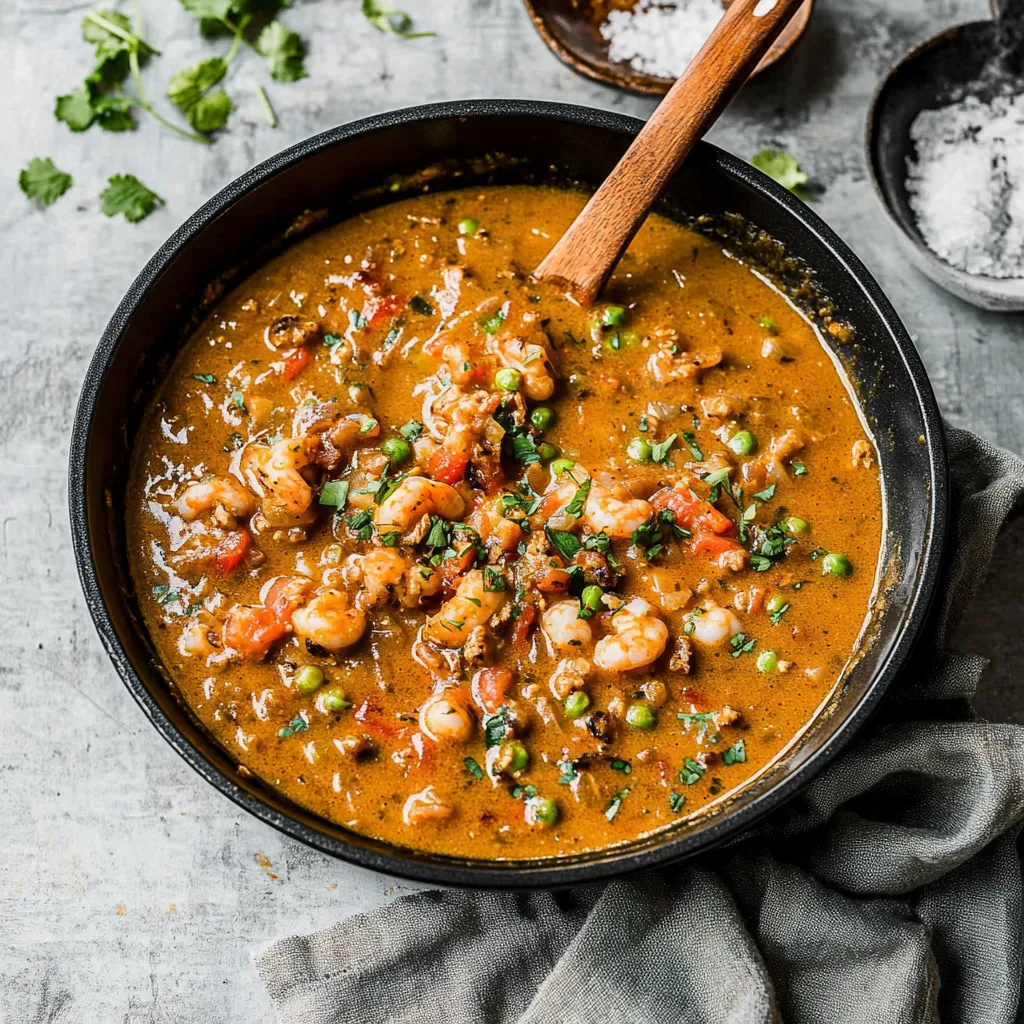 Pin it
Pin it
This heartwarming Louisiana staple turns fresh crawfish into a buttery, flavorful delight. Each bite delivers well-seasoned tail meat swimming in a golden sauce built on roux, making a dish that's cozy yet elegant.
I've tweaked this recipe for years and found that spending extra time on the roux really builds those deep, layered flavors that make étouffée stand out. Just this past weekend, everyone couldn't believe how perfectly the sauce wrapped around each bit of rice.
Key Ingredient Choices
- Crawfish Tails: Try to get real Louisiana crawfish for the best taste. They need to be plump, pink, and smell fresh. Check for 'Product of Louisiana' on the package.
- Butter: Go for good unsalted butter when making your roux. The fancy European kinds with more fat will give you better results.
- Holy Trinity: Get crisp, fresh celery, onions, and bell peppers for your flavor base. Cut them all the same size so they cook evenly.
- Seafood Stock: Making it yourself is best, but good store options work too. It should look clear and smell nice.
- Seasonings: Fresh garlic, cayenne, paprika, and thyme add layers of flavor. You can make it as spicy as you want.
- Flour: Regular all-purpose flour works for the roux. Just make sure it's fresh.
Crafting Your Étouffée
- Getting Trinity Ready:
- Start by cutting your veggies very carefully - every bit of onion, celery, and bell pepper should be the same size, about 1/4 inch squares. This careful prep helps everything cook evenly and makes the sauce come together right. Cook them in butter until they turn see-through but don't brown, so they release all their good flavors.
- Making Your Roux:
- This step needs your patience and focus. Mix equal parts butter and flour over medium-low heat, and keep stirring. Watch it change from white to blonde to peanut butter color. The smell will go from raw flour to nutty and rich. This usually takes 10-15 minutes of non-stop attention.
- Adding Stock:
- Pour your seafood stock in slowly, stirring all the time to avoid lumps. Make sure each splash is mixed in before adding more. The sauce should stick to the back of a spoon but still flow smoothly.
- Putting In Crawfish:
- Carefully mix crawfish tails into the bubbling sauce, letting them warm through without cooking too much. Their natural sweetness should work with, not against, the rich sauce.
 Pin it
Pin it
My grandma always told me that real étouffée should feel rich but not too heavy, with everything standing out while still working together.
Timing Matters
Keep an eye on how thick your sauce gets. It should coat rice nicely but not be sticky. The crawfish just needs enough time to heat up while staying tender.
Fancy Serving Ideas
Put it on a bed of long-grain rice, letting the sauce flow down naturally. Add fresh parsley and green onions on top for color and extra flavor.
Add Your Touch
You might want to try adding classic Louisiana seasonings like file powder or more cayenne for heat. Just make sure anything you add makes the crawfish taste better, not worse.
Keeping It Fresh
Let it cool all the way before putting it in the fridge. The flavors often get better overnight as they mix together. Warm it up gently to keep the sauce just right.
 Pin it
Pin it
After making this classic dish for years, I've found that success comes from respecting old-school methods while adding your own small touches. You'll end up with a dish that honors its Louisiana roots while creating fresh memories at your dinner table.
Frequently Asked Questions
- → What kind of crawfish should I get?
- Go for top-notch Louisiana crawfish tails. Skip imports and look for packaging that says 'Louisiana' for the best taste.
- → Can I swap out seafood stock?
- Sure, replace it with chicken or veggie stock if needed, but seafood stock keeps it authentic.
- → How dark should I let the roux get?
- Cook it until it's golden, similar in color to peanut butter. But keep an eye on it so it doesn't burn!
- → Is it okay to prep this early?
- Yep, make it ahead and reheat when you're ready. It also freezes fine for about three months.
- → What makes Cajun and Creole étouffée different?
- Creole versions include tomatoes, while Cajun classics skip them entirely.
